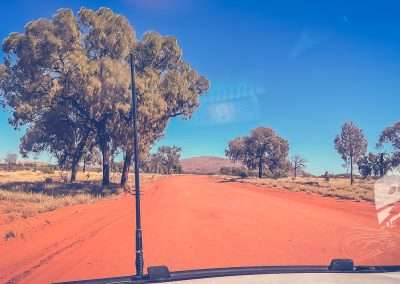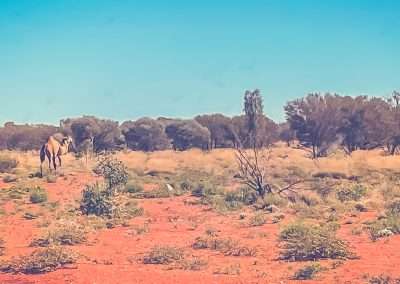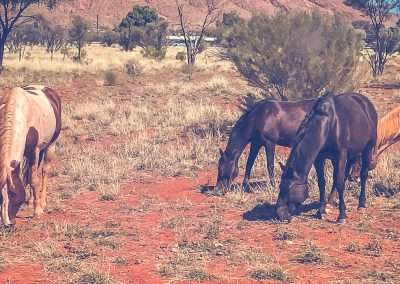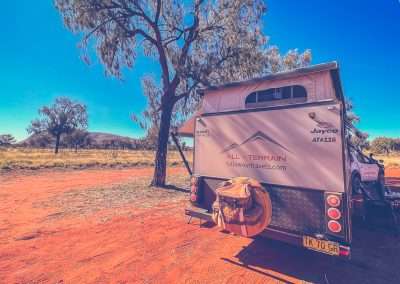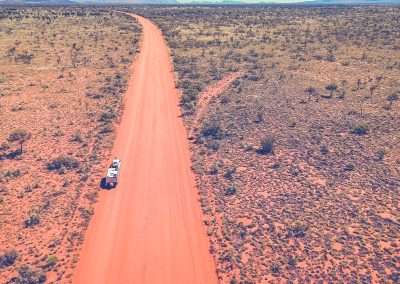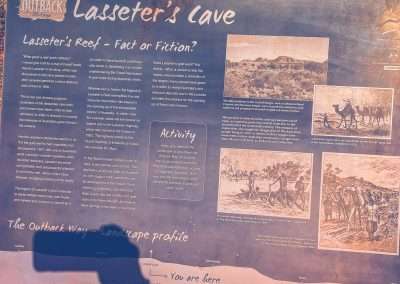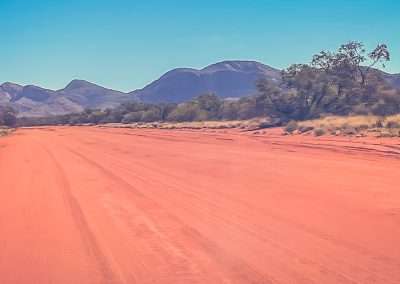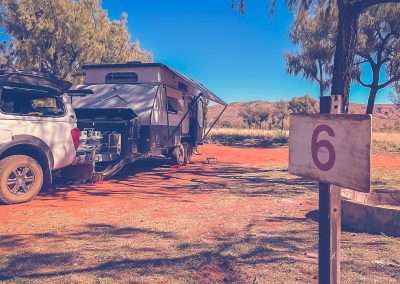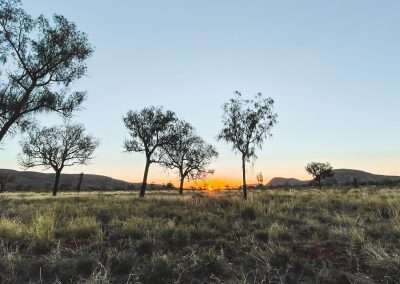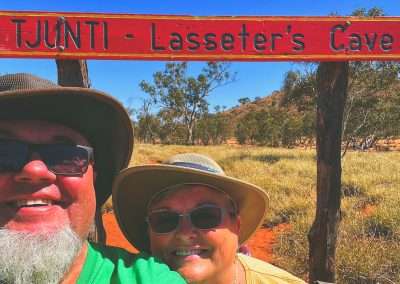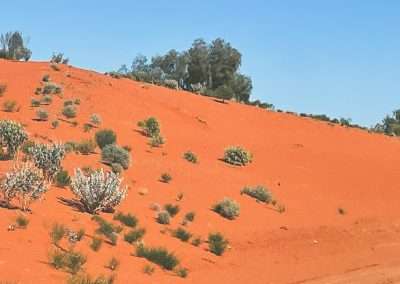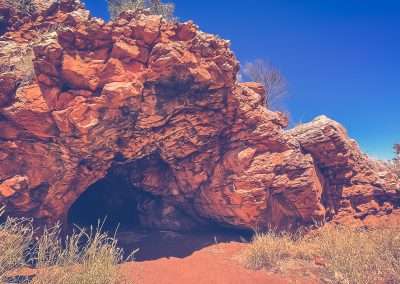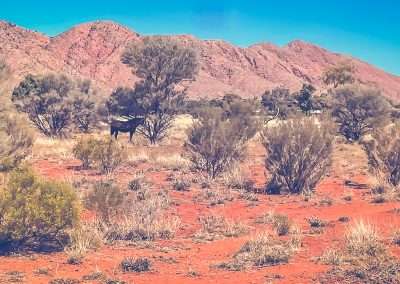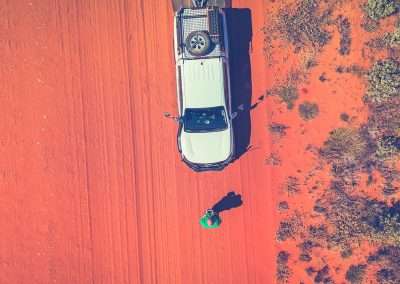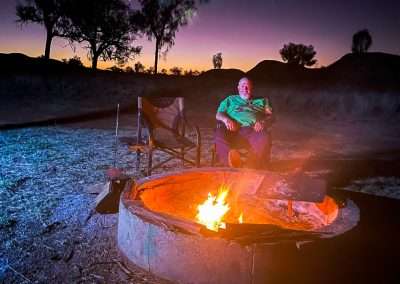Docker River Camping & Exploring The Great Central Road GCR
Discover what makes Docker River a must see stop on your Great Central Road GCR trip with camping tips & stunning outback scenery to explore. Seeking a real outback adventure? Then Docker River on The Great Central Road (GCR) should be on your list.
Located in the Northern Territory near the Western Australia border. Docker River (also known as Kaltukatjara) is a small remote Aboriginal community with a rugged landscape that’s bound to leave an impression on any traveller. From camping under the stars to exploring ancient rock formations. There’s plenty to do and the journey itself is as much a part of the adventure as the destination.
Let’s dive into what makes Docker River such an incredible spot, how to get there from Yulara, what you’ll see along the way and what to expect when you arrive.
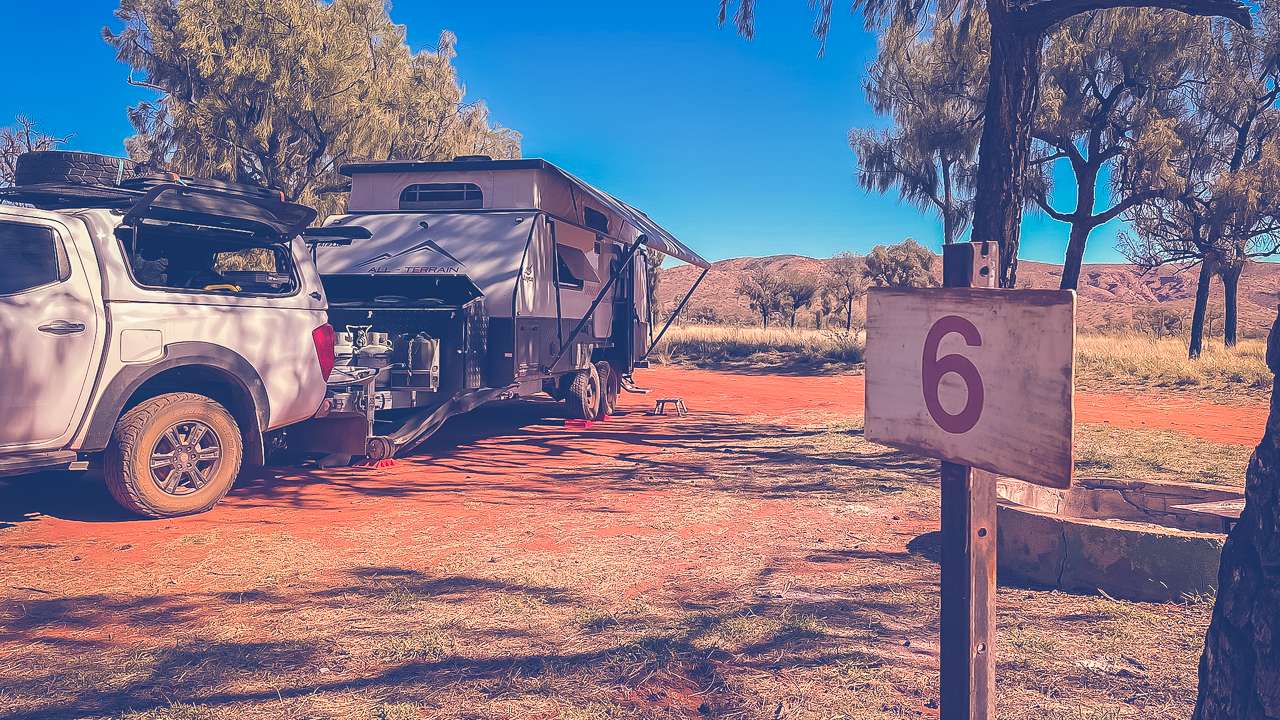
Camp Site 6 At Docker River
Table Of Contents
- Travelling From Yulara To Docker River
- Permits And Pricing
- What You’ll See Along the Way
- We Visited Lasseters Cave
- Camping At Docker River: What To Expect
- Weather At Docker River
- Things to Do While Camping at Docker River
- Historical Information on Docker River
- Final Thoughts
- Docker River Camping & Exploring The Great Central Road GCR Photo Gallery
Travelling From Yulara To Docker River
First things first, getting to Docker River is half the fun. The drive from Yulara to Docker River is about 225 kilometres and it takes around 3 hours if the weather and road conditions are on your side. You’ll be driving along the Lasseter Highway and then joining the Great Central Road which is unsealed. A 4WD vehicle is recommended.
If you’re planning to travel from Yulara to Docker River, yep, you’ll need permits. If you’re planning to travel from Yulara to Docker River, yep, you’ll need permits. This route takes you through Aboriginal land, so it’s important to get the right permissions before you hit the road.
Permits And Pricing
For a trip from Yulara to Docker River, you’ll need to apply for two permits:
- Northern Territory Permit (free): This covers the NT portion of the trip. Apply through: Central Land Council or call +61 8 8951 6211.
- Western Australia Permit (free): Once you cross into WA, you’ll need this one. Apply via the Department of Planning, Lands and Heritage or ring +61 8 6551 8002.
Make sure you apply for these permits at least 10 days before your trip. It’s simple and won’t cost you a cent, but it’s a must-do to ensure you’re respecting the traditional landowners.
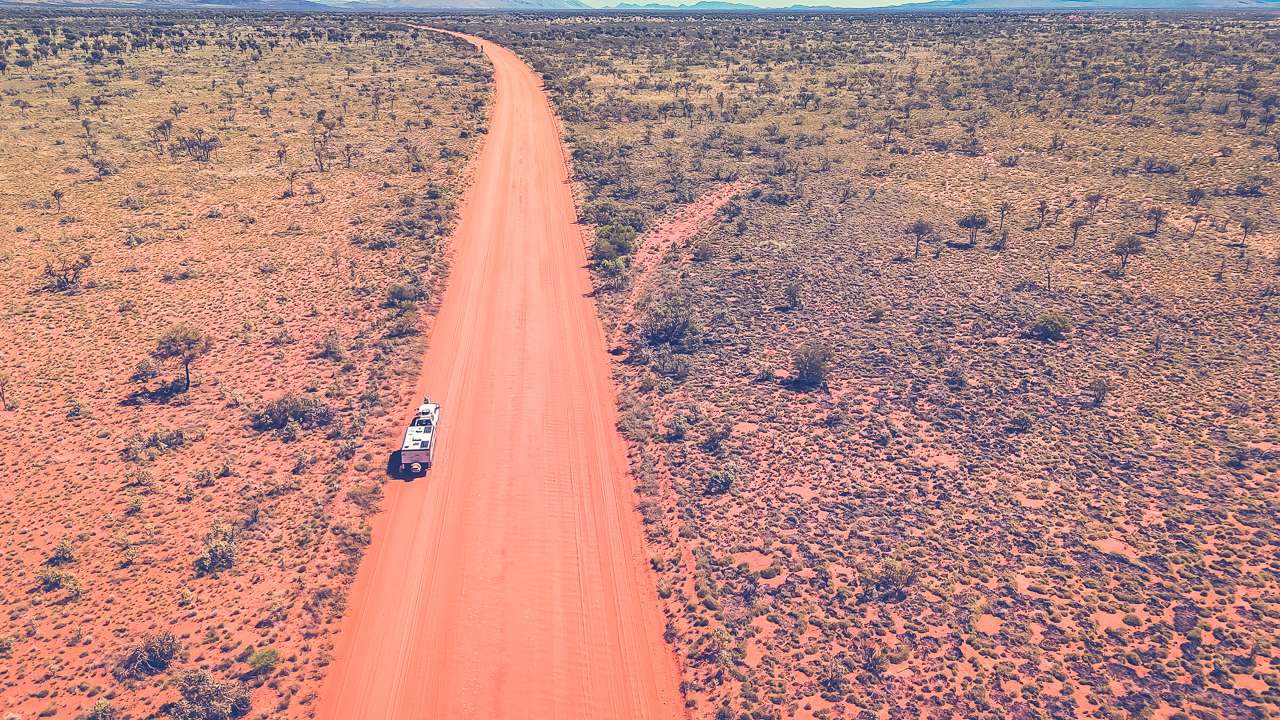
default
Why Permits?
This isn’t just red tape it’s about respecting Aboriginal land and culture. These permits ensure travellers do the right thing by the communities in the area. Getting permits might sound like a hassle, but it’s worth it for the epic adventure you will have have.
Quick Travel Tips
- Make sure your vehicle’s in good condition – the roads can be rough.
- Check the weather (it can get scorching), and bring extra water.
- Look out for wildlife along the way – it’s not unusual to see camels or roos!
- Carry an extra spare tyre – when you blow your first tyre and have 500 kilometres to go before you can replace it you will be happy you brought an extra!
What You’ll See Along the Way
The drive itself is a true outback experience. Here’s what you can expect to see along the way.
- Uluru and Kata Tjuta: As you head out of Yulara, you’ll be treated to stunning views of Uluru and Kata Tjuta in the distance. These iconic rock formations never get old and are a great backdrop as you start your journey.
- Red Desert Landscape: The landscape quickly turns into vast stretches of red dirt, spinifex and low scrub. The red desert scenery is stunning in its starkness and gives you a true sense of the isolation of the outback.
- Wildlife: You might spot a few kangaroos, emus or even a camel or two wandering around. But keep in mind, wildlife tends to be more active around dawn and dusk, so take it easy if you’re driving during these times to avoid an unwanted run-in.
- Remote Communities: You’ll pass by a few smaller communities and stations, but for the most part, it’s just you, the open road and a big blue sky. The solitude is part of what makes this trip so special.
- Cattle Stations: You’ll pass by vast cattle stations with seemingly endless fences. This is true outback station country and it’s not uncommon to see cattle wandering near the road.
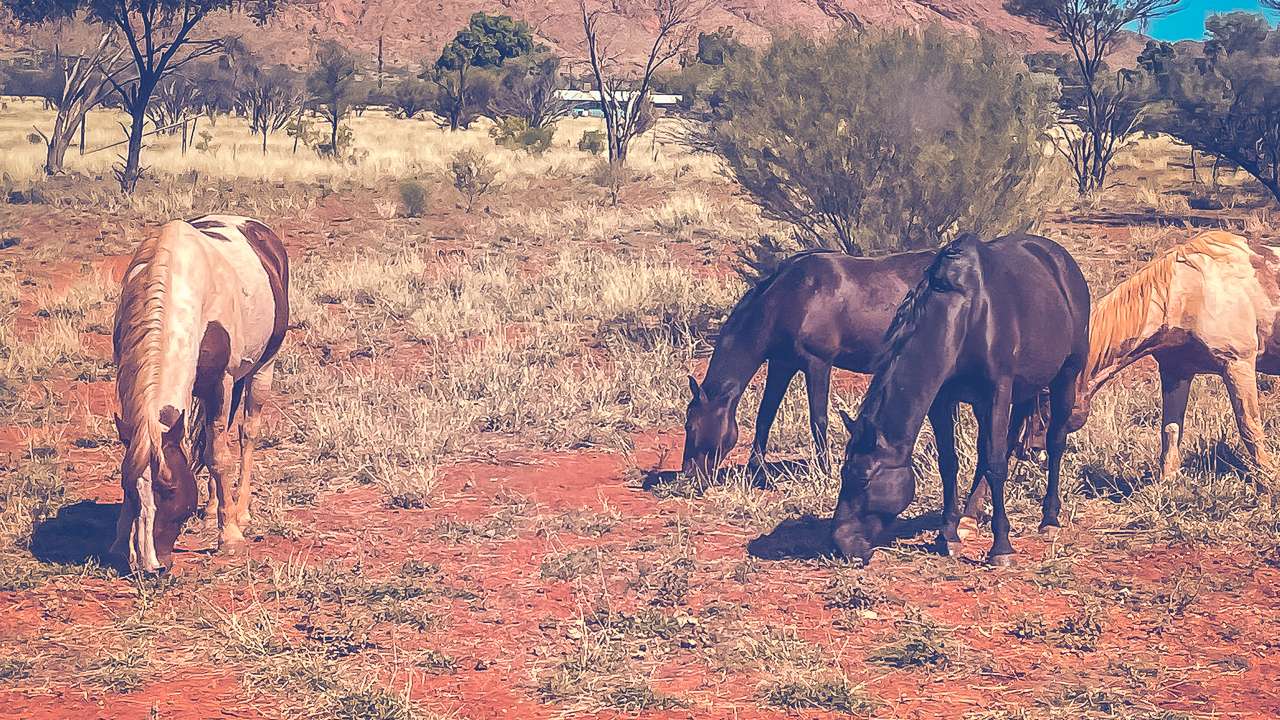
Wild Brumbies Visiting our Camp At Docker River
We Visited Lasseters Cave
Lasseter’s Cave has always held a special interest to me. Visiting it has been on my bucket list for years. It’s not just another outback stop; it’s a slice of Australian history wrapped in mystery, legend and a dash of adventure. For anyone who’s into Aussie folklore. Or if you simply love exploring the vast, rugged beauty of the outback Lasseter’s Cave is a must see.
Who Was Lasseter?
Harold Bell Lasseter is a name that stirs curiosity among many Aussies especially those who love a good story about hidden treasures. In the 1930s Lasseter claimed he had discovered a gold reef rich beyond belief. Hidden somewhere in Central Australia. According to him this reef was so large that it could change the fortunes of Australia. His story captured the imagination of many and an expedition (not the first) was launched to find the legendary “Lasseter’s Reef.”
However things took a turn for the worse. The expedition faced harsh desert conditions and Lasseter was separated from his team. In his desperation he sought shelter in a small cave along the Hull River. this cave later became known as Lasseter’s Cave. This humble shelter is where Lasseter stayed for several weeks waiting for help that never came. Unfortunately he perished in the desert and the location of his supposed gold reef remains one of Australia’s greatest unsolved mysteries.
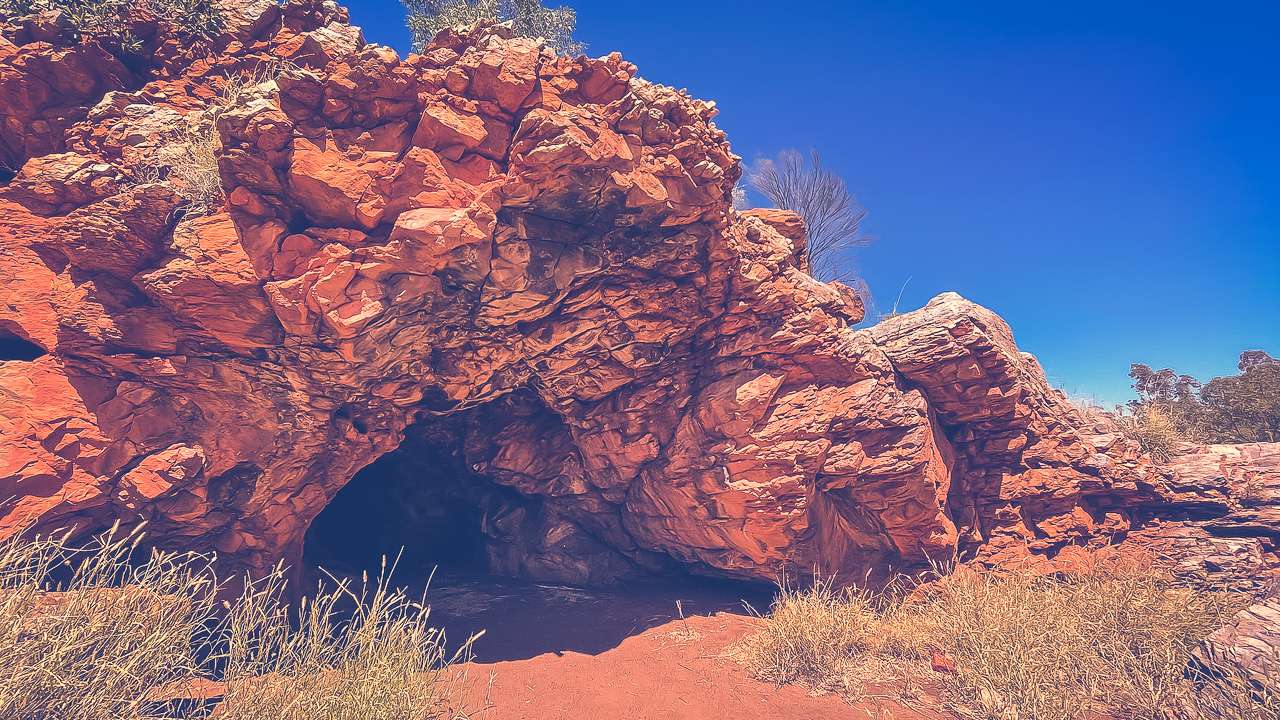
Lasseters Cave He Went No Further
Why Visit Lasseter’s Cave?
For me Lasseter’s Cave isn’t just a bit of rock; it’s a monument to the determination, adventure and mystery that define much of Australia’s pioneering history. Whether Lasseter was a bullshitter of the highest order or not visiting the cave gives you a real sense of the isolation and harshness of the Australian outback. It’s a sobering reminder of the extremes that explorers like Lasseter endured in the hope of striking it rich or making a name for themselves. The cave itself is tucked along the Hull River and is a quiet spot where you can sit and reflect on Lasseter’s fate. While the cave isn’t large or particularly impressive in appearance the history behind it makes it a significant site.
Getting There
Lasseter’s Cave is located along the Great Central Road between Uluru and Docker River. Do if you’re heading that way it’s an easy stop.
Why It Matters
Lasseter’s story is one of hope, perseverance and mystery. It’s a classic Aussie tale that reminds us of the harshness of the outback and the spirit of those who ventured into it, often against all odds. Whether or not Lasseter’s Reef ever existed, his story has become a part of Australian folklore, a legend that still draws people into the heart of the country, searching for treasure, or perhaps just a deeper connection to Australia’s past.
For me visiting Lasseter’s Cave wasn’t just about seeing a historical site; it was about paying homage to the adventurers and dreamers who shaped Australia’s rugged history. And who knows, maybe one day someone will actually stumble across that elusive gold reef!
Camping At Docker River: What To Expect
Camping at Docker River is definitely for people who are keen on a shall we say “more rustic experience”. There are fire pits but you’ll have to bring your own wood. It’s a free camping area. We quite enjoyed the location. There are a few small amenity blocks dotted around the camp grounds. However these are all locked up and don’t appear to have been in use for quite a while.
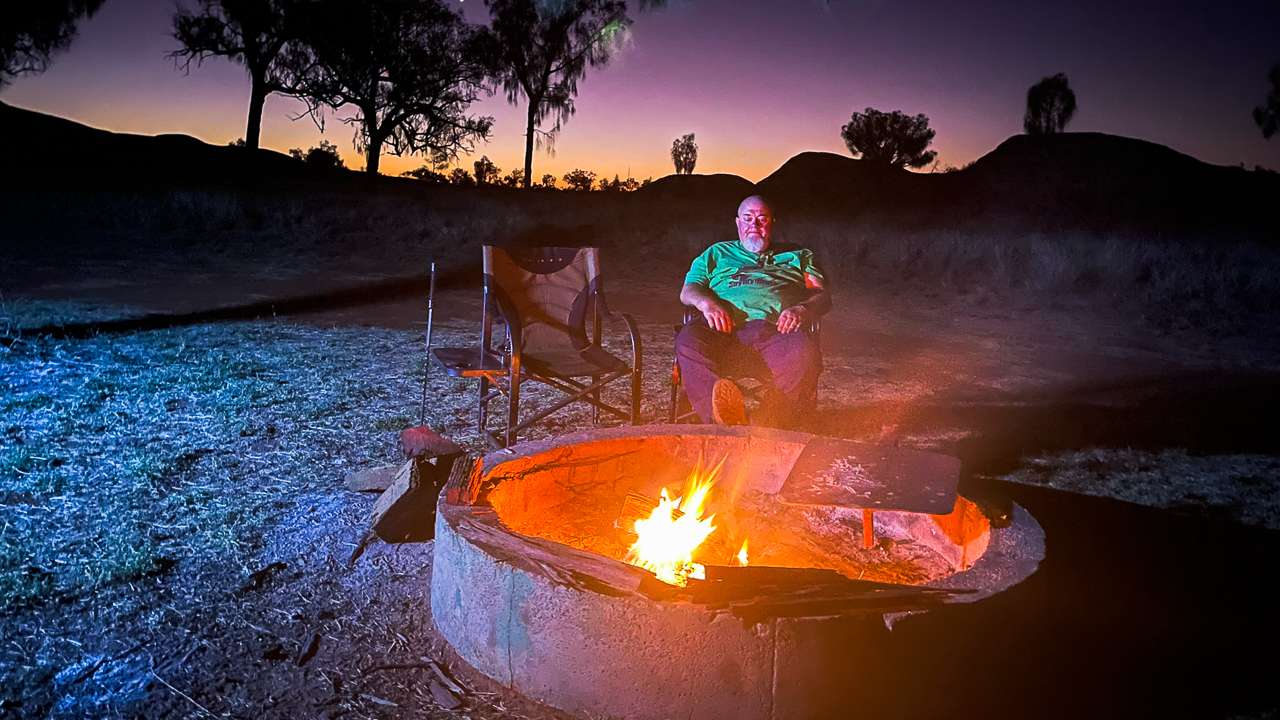
Evening Fire While Camping At Docker River
Amenities At Docker River Campground
Fire Pits: If you’re up for a campfire (and it’s allowed) you’ll find fire pits available. Nothing beats sitting around a fire under the stars in the middle of the desert. Make sure to bring your own wood though as there’s none available at the camp ground.
Is It Safe To Camp At Docker River?
We had no problems at all camping at Docker River. However as with any remote outback destination there are a few things to keep in mind.
- Wildlife: You’ll be in the outback, so expect wildlife to be around. Dingoes are known to roam the area so keep your food secured and don’t leave anything out overnight. Watch out for snakes during the warmer months. We had a few groups of wild brumbies come through our camp – it was a great thing to see.
- Weather: The weather can be extreme. It’s important to be prepared for hot days and cold nights, especially during the winter months when temperatures can drop dramatically after the sun sets.
- Respect the Community: Docker River is an Aboriginal community and it’s important to respect local customs and traditions. Make sure to stick to designated camping areas and avoid trespassing on community land.
- Road Conditions: Always check the road conditions before heading out especially if there’s been rain. The Great Central Road can become impassable after heavy rain and you don’t want to get bogged down in the middle of nowhere.
Weather At Docker River
Docker River’s weather is typically outback extreme. Summers (December to February) are scorching, with daytime temperatures often reaching over 40°C. If you’re planning to camp during summer, be prepared for the heat and pack plenty of water, sun protection and a good hat.
Winter (June to August) is more forgiving, with daytime temperatures around 20°C to 25°C, but nights can be cold, dropping to near freezing. If you’re camping in winter, be sure to pack warm gear for the nights, as the desert temperature can dip quickly after sunset.
Spring and autumn are ideal times to visit, with pleasant daytime temperatures and cooler nights.
Things to Do While Camping at Docker River
Docker River offers a handful of unique outback experiences for those willing to explore. Here’s what you can do while camping in this remote part of Australia:
- Visit the Petermann Ranges
The Petermann Ranges lie just to the north of Docker River and offer some incredible hiking opportunities. These rugged ranges are not heavily trafficked, so you’ll likely have them to yourself. Make sure to take plenty of water and let someone know where you’re going, as it’s easy to get lost out here. - Birdwatching and Wildlife Spotting
The outback is home to a surprising amount of wildlife and Docker River is no exception. Bring a pair of binoculars and see how many bird species you can spot. You might catch sight of wedge-tailed eagles, galahs, or even some rare desert parrots. There are brumbies in the area as well as camels so keep your eyes open.
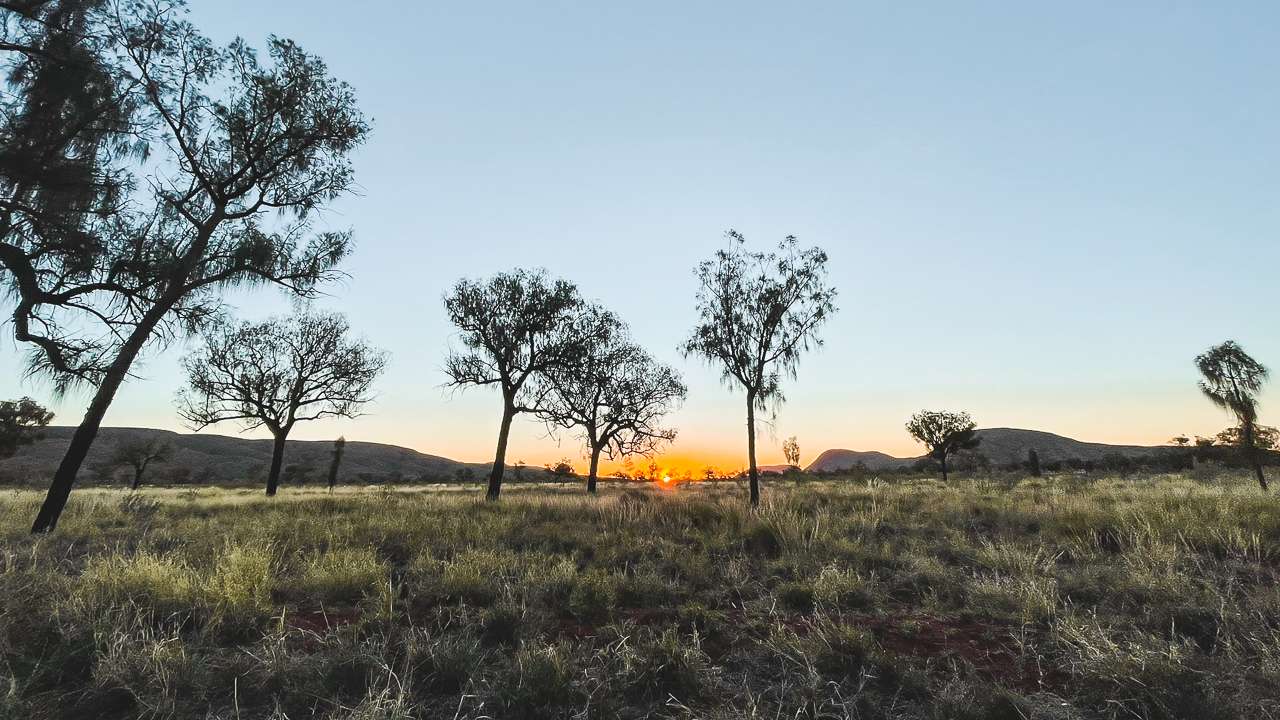
Sunset At Docker River Campground
Historical Information on Docker River
Docker River, or Kaltukatjara as it’s known to the local Pitjantjatjara people, has a fascinating history. The community was established in the 1960s as a settlement for Aboriginal people who had been displaced from their traditional lands. The town itself is named after the nearby Docker River, which was named by explorer Ernest Giles in 1872.
Historically, the area has been inhabited by Aboriginal people for thousands of years, with rich cultural traditions tied to the land. The local population continues to practise many of these traditions and visiting Docker River is a chance to learn about a way of life that has endured for millennia in one of the most challenging environments on earth.

Great Central Road Between Uluru And Docker River
Final Thoughts
If you’re up for a true outback adventure, Docker River is a fantastic destination. The journey from Yulara to Docker River is filled with breathtaking landscapes, wildlife and a sense of isolation that makes the outback so special. Once you arrive you’ll find a peaceful, rugged campsite that offers a chance to connect with nature.
Just remember to prepare well – bring plenty of water, check the road conditions and respect the local community and environment. Whether you’re sitting around a campfire. Exploring the nearby ranges or gazing up at the stars. Docker River is sure to leave you with lasting memories of the Australian outback.
Docker River Camping & Exploring The Great Central Road GCR Photo Gallery
On The Great Central Road Heading To Docker River From Uluru
On The Great Central Road Heading To Docker River From Uluru
Lasseters Cave I’ve Always Wanted To Visit it Now I Have
Lasseters Cave I’ve Always Wanted To Visit it Now I Have
Getting Some Drone Shots On The Great Central Road
Getting Some Drone Shots On The Great Central Road

